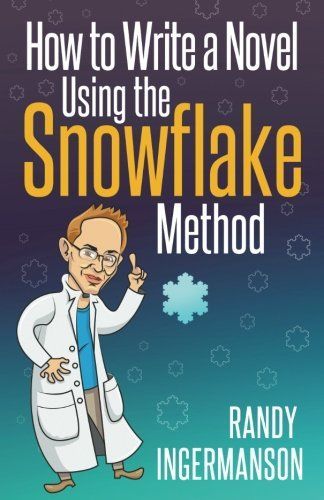
How to Write a Novel Using the Snowflake Method
A Magical Key to Unlock Your Creative Wizard Are you writing a novel, but having trouble getting your first draft written? You've heard of “outlining,” but that sounds too rigid for you. You've heard of “organic writing,” but that seems a bit squishy to you. Take a look at the wildly popular Snowflake Method—ten battle-tested steps that jump-start your creativity and help you quickly map out your story. All around the world, novelists are using the Snowflake Method right now to ignite their imaginations and get their first drafts down. In this book, you'll follow the story of a fictitious novelist as she learns to tap into the amazing power of the Snowflake Method. Almost magically, she finds her story growing from a simple idea into a deep and powerful novel. And she finds her novel changing her—into a stronger, more courageous person. Zany, Over the Top, and Just Plain Fun How to Write a Novel Using the Snowflake Method is a “business parable”—a how-to guide written in story form. It's zany. It's over the top. It's just plain fun. It shows you how it's done, rather than tells you. You'll learn by example how to grow your story idea into a sizzling first draft. You'll discover: How to define your “target audience” the right way, so you know exactly how your ideal readers think and feel. Forget what the experts tell you about “demographics.” How to create a dynamite selling tool that will instantly tell people whether they'll love your story or hate it. And you want them to love it or hate it. How to get inside the skin of each of your characters—even your villain. Especially your villain. How to find a deep, emotively powerful theme for your story. Do you know the best point in your novel to unveil your theme? How to know when to backtrack, and why backtracking is essential to writing great fiction. How to fire-test each scene to ensure it's high-impact—before you write it. ExcerptGoldilocks had always wanted to write a novel. She learned to read before she went to kindergarten. In grade school, she always had her nose in a book. In junior high, the other kids thought she was weird, because she actually liked reading those dusty old novels in literature class. All through high school, Goldilocks dreamed of writing a book of her own someday. But when she went to college, her parents persuaded her to study something practical. Goldilocks hated practical, and secretly she kept reading novels. But she was a very obedient girl, so she did what her parents told her. She got a very practical degree in marketing. After college, she got a job that bored her to tears—but at least it was practical. Then she got married, and within a few years, she had two children, a girl and then a boy. She quit her job to devote full time to them. As the children grew, Goldilocks took great joy in introducing them to the stories she had loved as a child. When her son went off to kindergarten, Goldilocks thought about looking for a job. But her resume now had a seven-year hole in it, and her practical skills were long out of date. The only jobs Goldilocks could qualify for were minimum wage. She suddenly realized that being practical had made her horribly unhappy. On a whim, Goldilocks decided to do the one thing she had always wanted more than anything else—she was finally going to write a novel. She didn't care if it was impractical. She didn't care if nobody would ever read her novel. She was going to do it just because she wanted to. For the first time in years, she was going to do something just for herself. And nobody was going to stop her.
Reviews
Karen Harding@karen_harding
Suat ATAN@suatatan
Rory O'K@ror
Patrick Baumann@pbaumann
Allison Francis@library_of_ally
McKinley Valentine@mckinleaf
Crystal Counterman@twistedreads